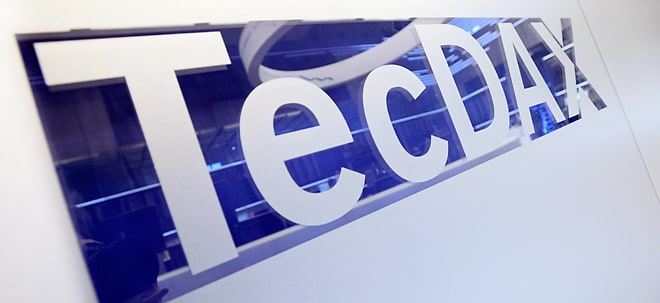PJM Chooses 51 Generation Resource Projects To Address Near-Term Electricity Demand Growth
The Reliability Resource Initiative Is a One-Time Opportunity To Quickly Add Energy to the Grid
VALLEY FORGE, Pa., May 2, 2025 /PRNewswire/ -- PJM has selected 51 projects that can come online quickly and provide more than 9,300 MW of reliable capacity through the Reliability Resource Initiative.
The projects consist of 39 uprates and 12 new construction proposals. The uprates apply to existing natural gas, nuclear, coal and onshore wind resources. Of the new projects, half are gas, five are batteries and one is nuclear. The uprates total 2,108 MW of unforced capacity (UCAP), or the amount of energy a resource can be expected to provide during times of highest system reliability risk. The new projects would contribute 7,253 MW of UCAP, for a combined total of 9,361 MW.
Most of the projects, or 90%, are expected to be online by 2030. All are projected to be online by 2031. The Reliability Resource Initiative (RRI) is a one-time opportunity for shovel-ready resources that have short lead times to construction and operation and can most effectively contribute to reliability.
The projects were chosen from 94 applicants using a weighting process that assigned the most value to UCAP and in-service date, followed by Effective Load Carrying Capability (which values a resource's contribution to reliability) and additional consideration for locating in zones in greatest need of generation.
PJM originally planned to limit the number of projects in the initiative to 50, but a tie in the weighted scoring system for the last two projects resulted in 51 projects being selected.
Fuel | Uprates | No. of | New Construction | No. of | Combined |
Battery | 0 | 0 | 2,275 | 5 | 2,275 |
Coal | 14 | 1 | 0 | 0 | 14 |
Gas CC | 1,613 | 20 | 6,143 | 6 | 7,756 |
Gas CT | 365 | 13 | 0 | 0 | 365 |
Nuclear | 496 | 4 | 887 | 1 | 1,383 |
Onshore Wind** | 0 | 1 | 0 | 0 | 0 |
TOTAL(Energy) | 2,488 | 39 | 9,305 | 12 | 11,793 |
TOTAL (UCAP) | 2,108 | 7,253 | 9,361 |
|
Interconnection Process Reform Moves Toward Completion
The Federal Energy Regulatory Commission in 2022 approved PJM's reforms that moved the interconnection process from a "first-come, first-served" system of managing new generation projects to a "first-ready, first-served" method with milestones and progress payments designed to weed out speculative projects.
PJM is moving toward completion of the transition period of the reformed interconnection process, which has thus far produced 18,000 MW worth of projects with signed interconnection agreements through PJM's Fast Lane, for projects with lesser impact on the system. Those are among approximately 47,000 MW in projects that have completed PJM's interconnection process and are free to move to construction and operation.
The projects that are part of the Reliability Resource Initiative will be studied as part of the final transition phase of PJM's interconnection process reform. In addition to the RRI projects, PJM will complete processing on approximately 62,000 MW projects in 2025 and 2026.
PJM's new Cycle process for projects seeking to interconnect with the system will begin in spring 2026, with a process time of one to two years.
PJM Takes Action To Bring More Generation Online
As new generation comes online more efficiently through these reforms, the demand for electricity and retirement of generators continues to outpace the addition of new generation. For the past several years, PJM has acted on multiple fronts to mitigate the risk of having inadequate generation resources to serve rapidly increasing electricity demand. These actions include:
- Automation – Additional automation in the interconnection process, along with increased staffing over the past several years, has improved quality while reducing the backlog by 60%. PJM on April 10 also announced a multiyear collaboration with Google and Tapestry to deploy AI-enhanced tools to further streamline PJM's planning process for connecting new generation resources to the grid.
- Surplus Interconnection Service – PJM obtained FERC approval to streamline the use of the unused portion of interconnection service for facilities that cannot or do not operate continuously, every hour of every day, year-round (such as adding battery storage to a renewable site).
- Capacity Interconnection Rights Transfer – A reform package endorsed by PJM stakeholders and currently pending review by FERC would facilitate an expedited interconnection process for a replacement resource seeking to use the capacity interconnection rights of a retiring resource.
PJM also is urging states to work with developers to help get generation constructed once it has cleared PJM's study process.
PJM Interconnection, founded in 1927, ensures the reliability of the high-voltage electric power system serving 67 million people in all or parts of Delaware, Illinois, Indiana, Kentucky, Maryland, Michigan, New Jersey, North Carolina, Ohio, Pennsylvania, Tennessee, Virginia, West Virginia and the District of Columbia. PJM coordinates and directs the operation of the region's transmission grid, which includes 88,333 miles of transmission lines; administers a competitive wholesale electricity market; and plans regional transmission expansion improvements to maintain grid reliability and relieve congestion. PJM's regional grid and market operations produce annual savings of $3.2 billion to $4 billion. For the latest news about PJM, visit PJM Inside Lines at insidelines.pjm.com.
![]() View original content to download multimedia:https://www.prnewswire.com/news-releases/pjm-chooses-51-generation-resource-projects-to-address-near-term-electricity-demand-growth-302445187.html
View original content to download multimedia:https://www.prnewswire.com/news-releases/pjm-chooses-51-generation-resource-projects-to-address-near-term-electricity-demand-growth-302445187.html
SOURCE PJM Interconnection


